As part of the User Experience Design Studio, our team explored the brief “relearn the learning” by focusing on Australia’s literacy crisis. We used the double diamond framework to take a human-centred approach, especially given the sensitivity of the issue.
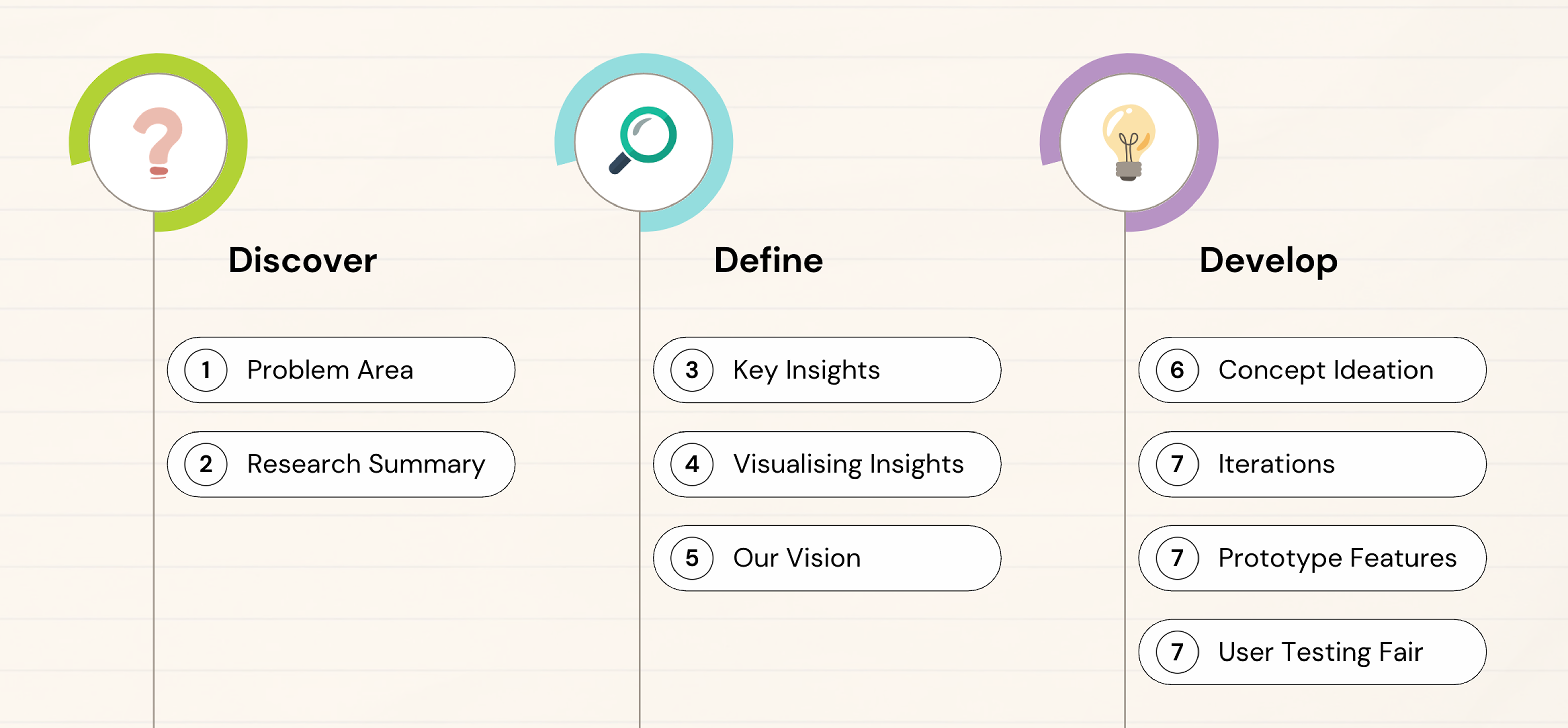
Background
We began with a simple question: why?
We carried out background research to investigate eight key questions. The findings were striking—1 in 7 Australians have very poor literacy skills, and 1 in 3 have levels low enough to be at risk of unemployment and social exclusion.
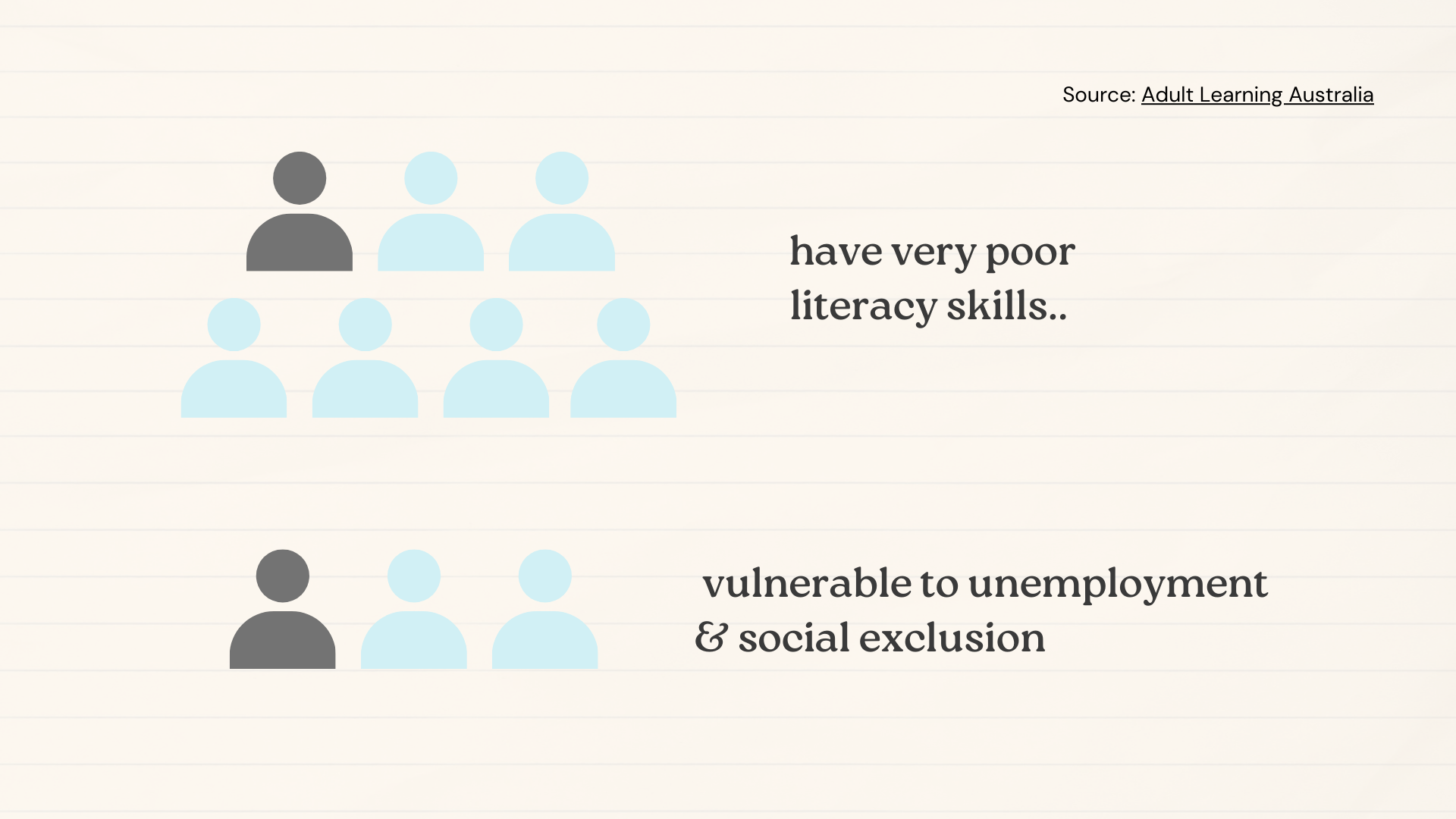
The issue often starts early. Around 20% of children fail to meet basic reading standards by the time they reach university. According to the Australian Institute of Health and Welfare, 22% of children are now starting school less developmentally prepared than ever before.

These findings made it clear that literacy struggles in older children often stem from challenges during early learning. To have a lasting impact, we focused our attention on early childhood literacy.
Primary Research
While secondary sources highlighted critical issues, they didn’t fully explore how teaching methods, technology, and socio-economic factors interact. To address this, we used a mixed methods approach—surveys, interviews, and digital ethnography—to collect both attitudinal and behavioural data.
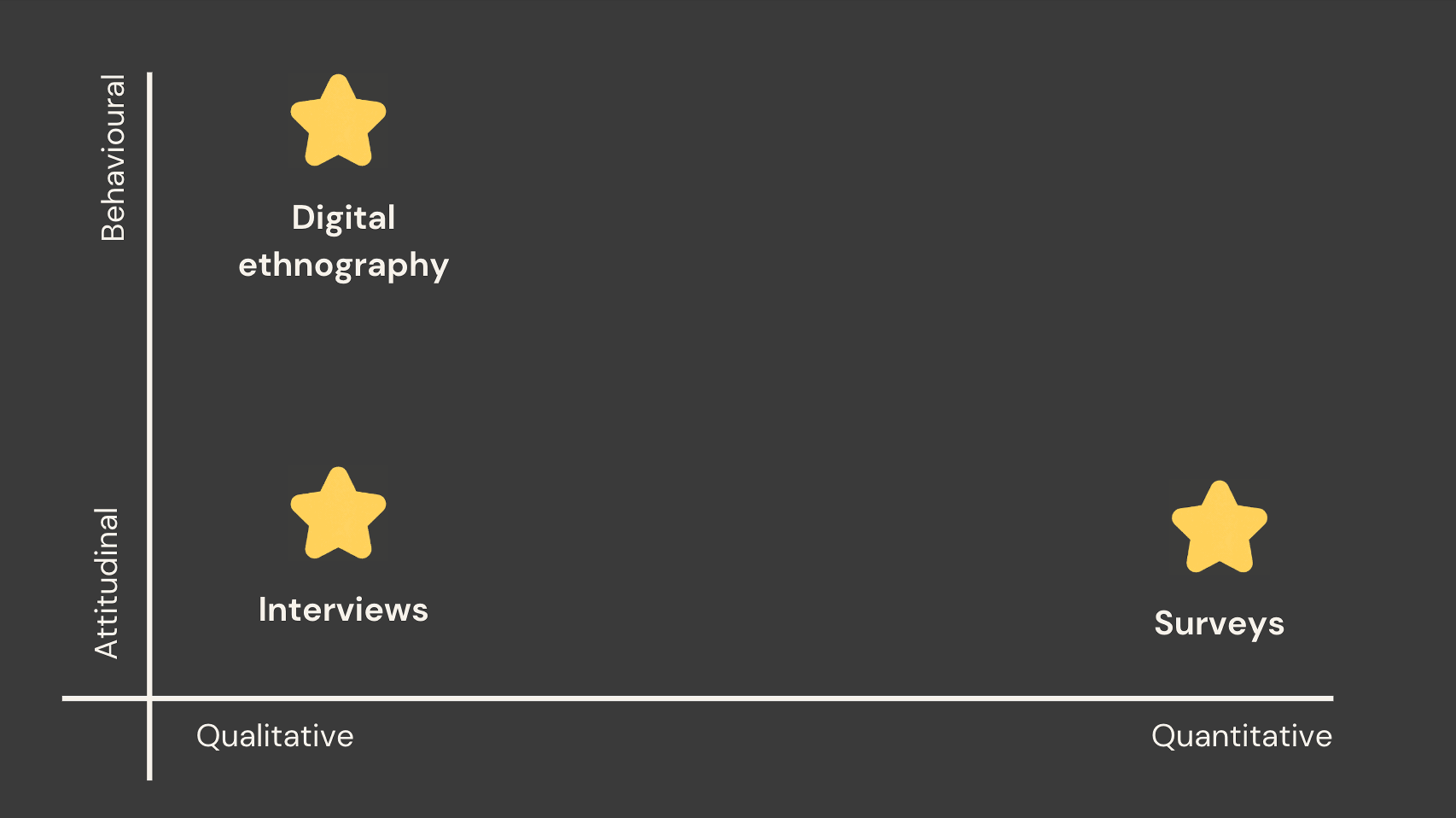
We started with a survey targeting parents of 3–8 year-olds—an important age group for reading development. Thirty participants shared their experiences. While 80.1% reported actively supporting their child’s literacy, many found it hard to make time for consistent reading. This surfaced the need for deeper insights through interviews.
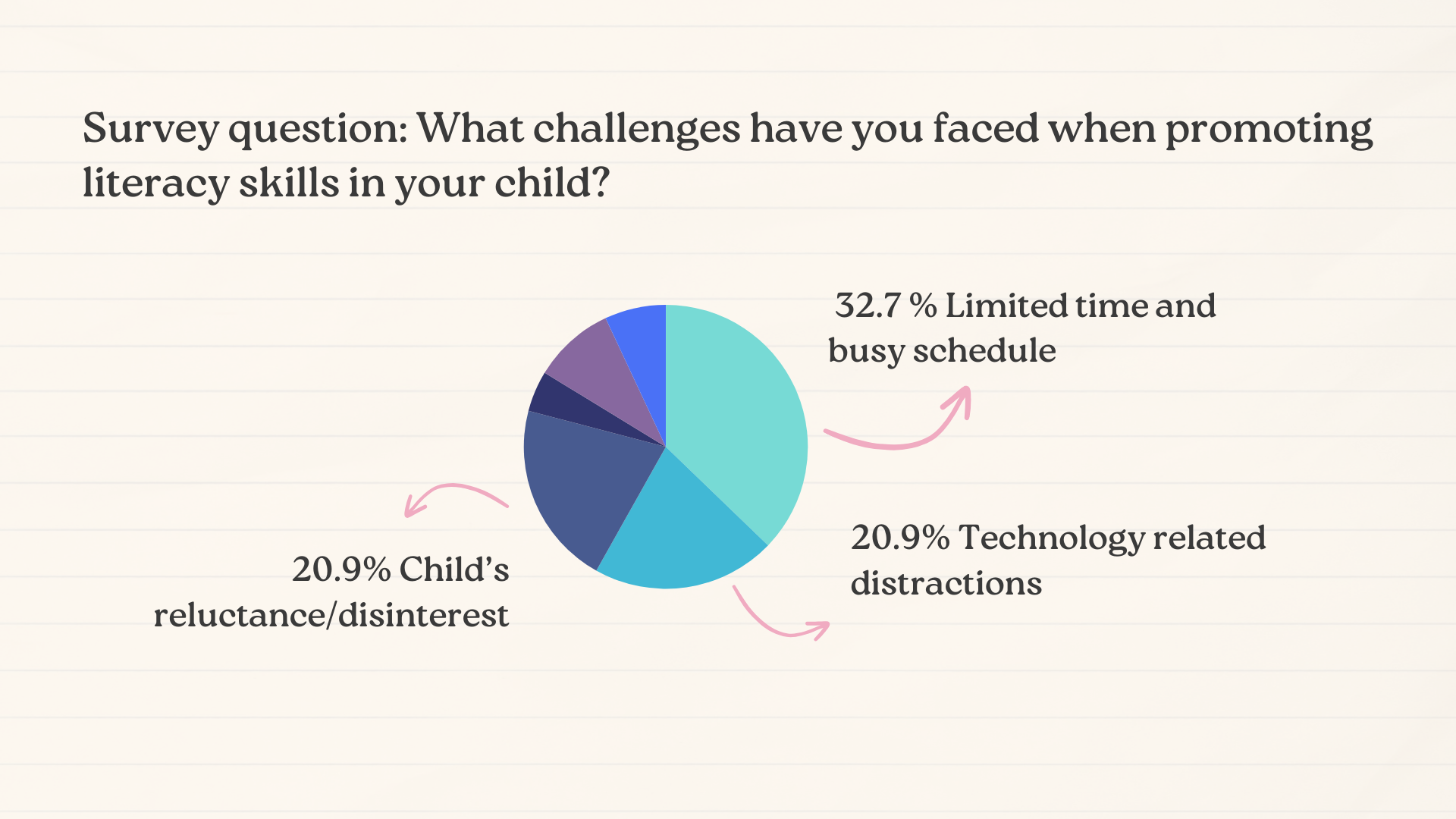
We then spoke with six parents and educators in semi-structured interviews. Both groups confirmed earlier findings—parents found reading routines difficult to maintain, while educators emphasized that literacy development involves more than reading, incorporating writing, play, and movement.
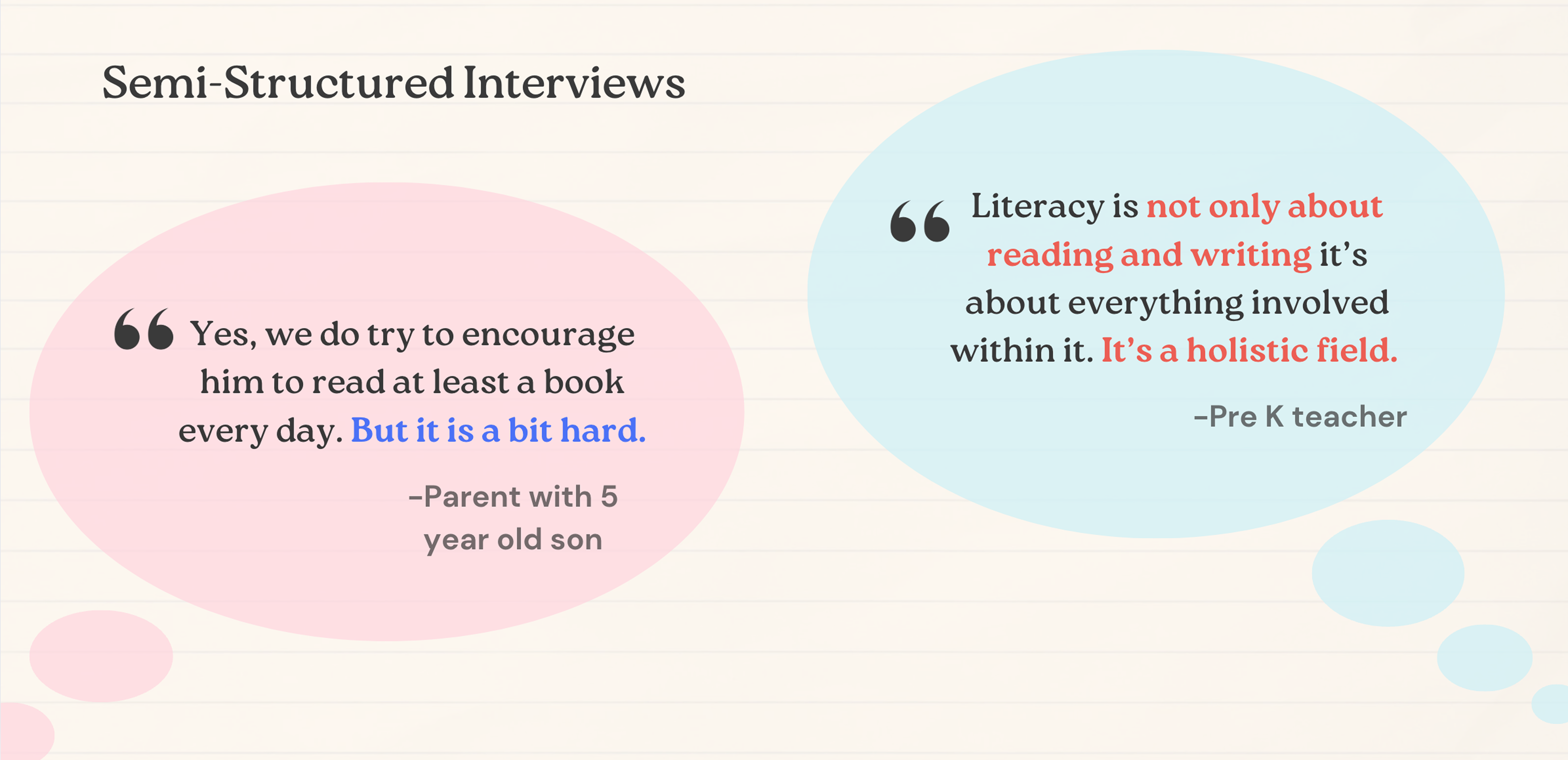
To gather broader perspectives without compromising ethics, we conducted digital ethnography. After reviewing three platforms, we found Reddit and YouTube comments particularly useful, offering honest, detailed accounts from both experts and parents.
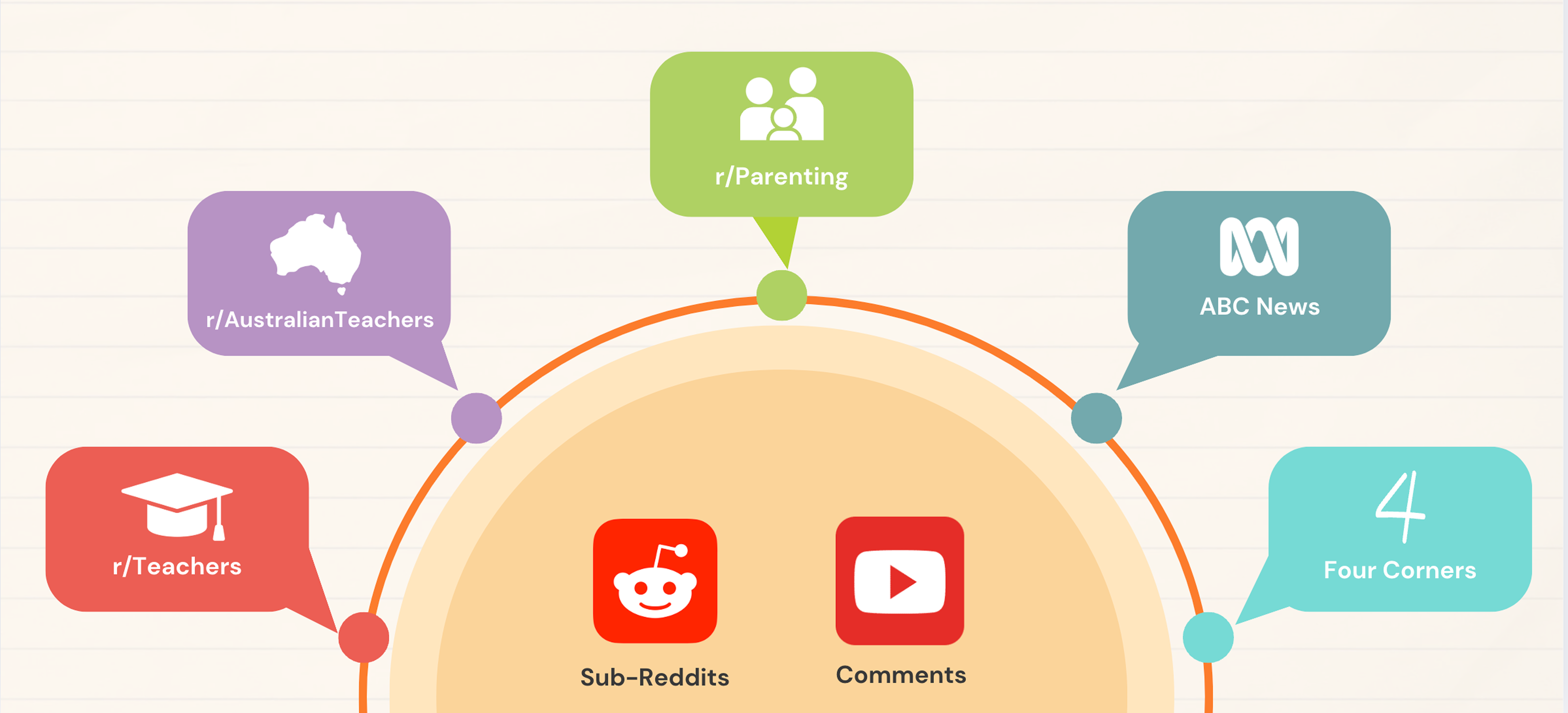
Analysis & Synthesis
We used thematic analysis to identify recurring patterns across our data. This process produced over 30 initial codes, which we grouped into 10 sub-themes and finally refined into six major themes.
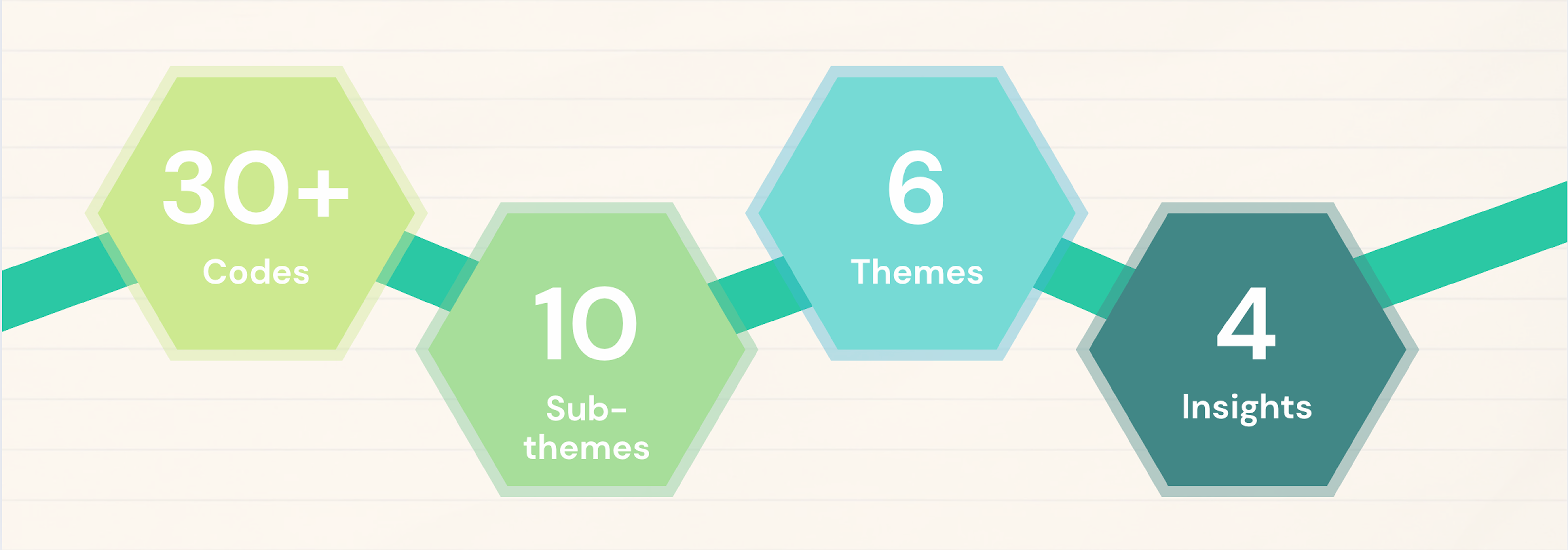
These themes were consolidated by removing overlap and redundancy, and we ranked them based on their level of novelty to guide our design direction.
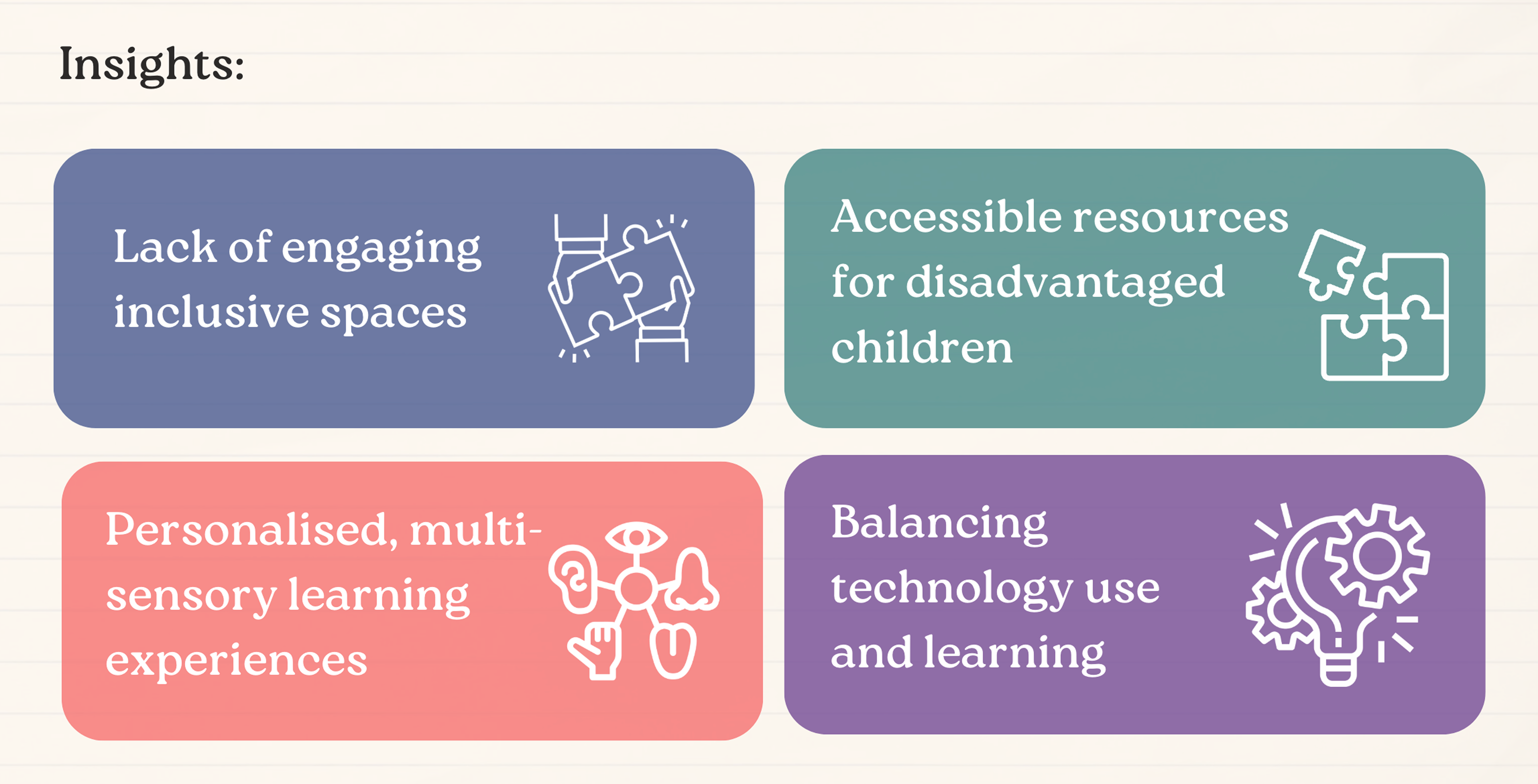
These insights helped us define a clear problem statement.
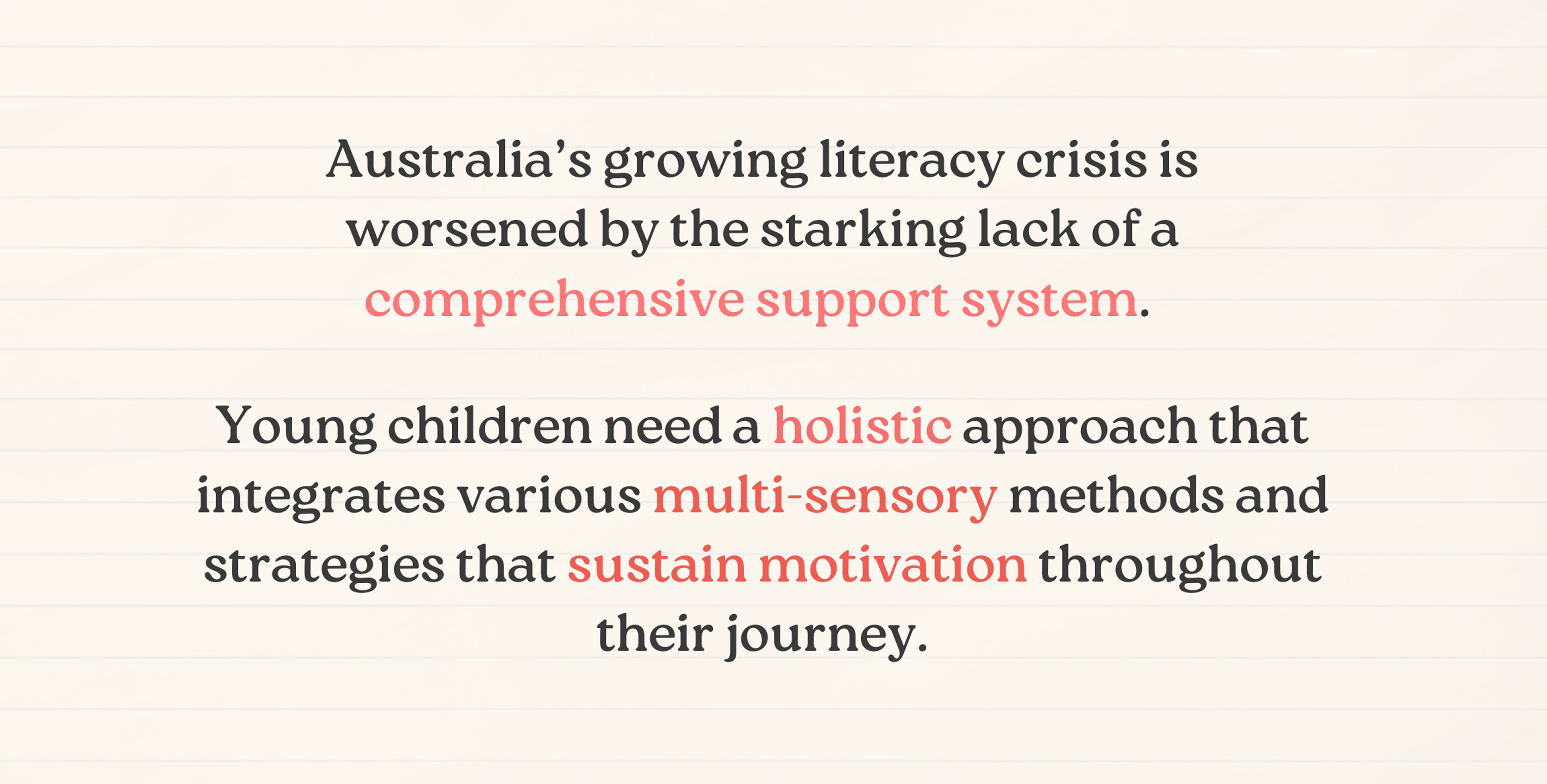
Visualising Insights
To ground our research in a relatable way, we created a persona named Striving Sammy—a child navigating literacy development. Sammy’s story illustrates how current programs can fall short in engaging young learners.
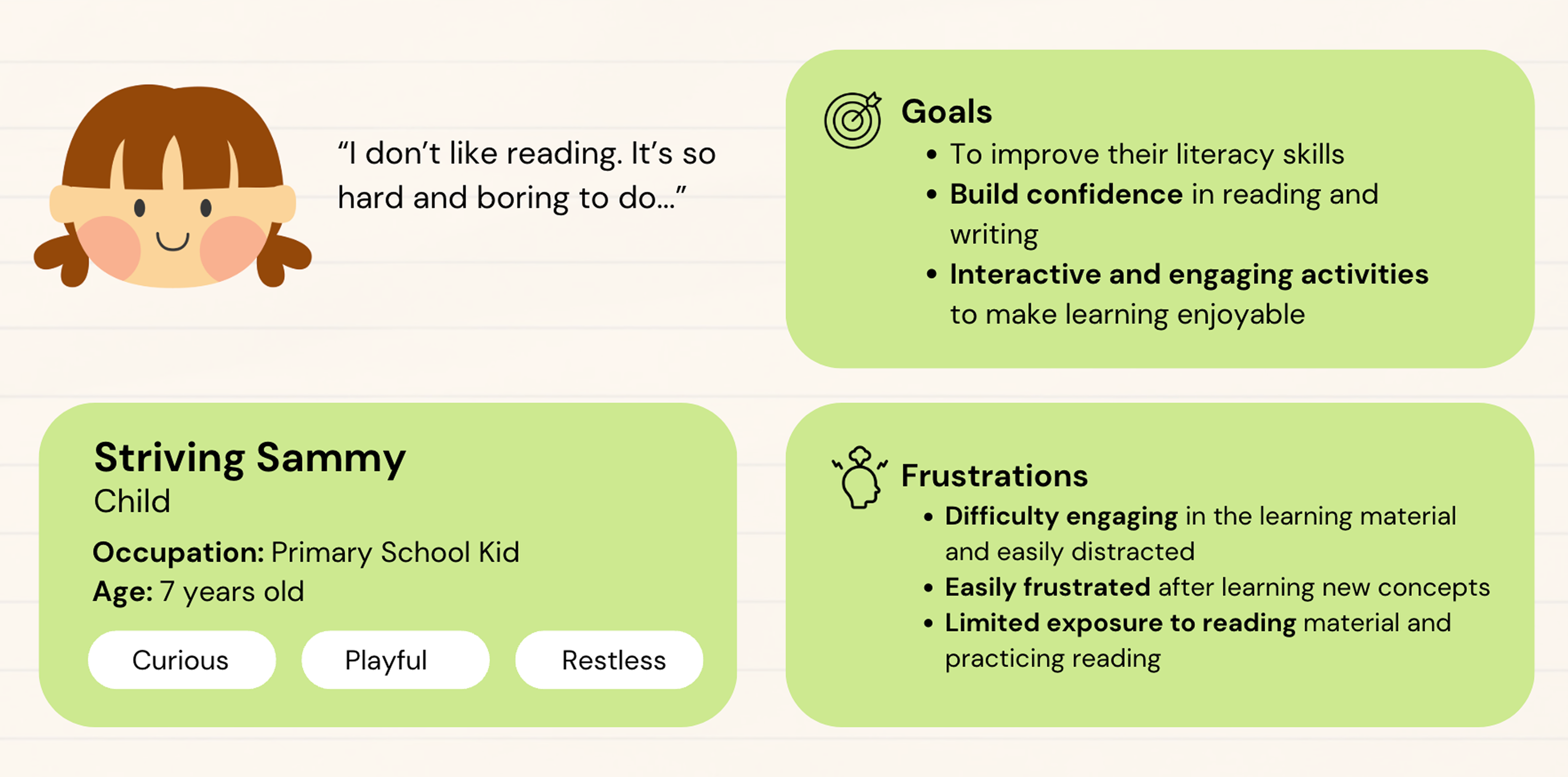
Both Sammy and her parents encounter frustration at different stages in the literacy journey. These touchpoints helped us map pain points before, during, and after literacy interventions.
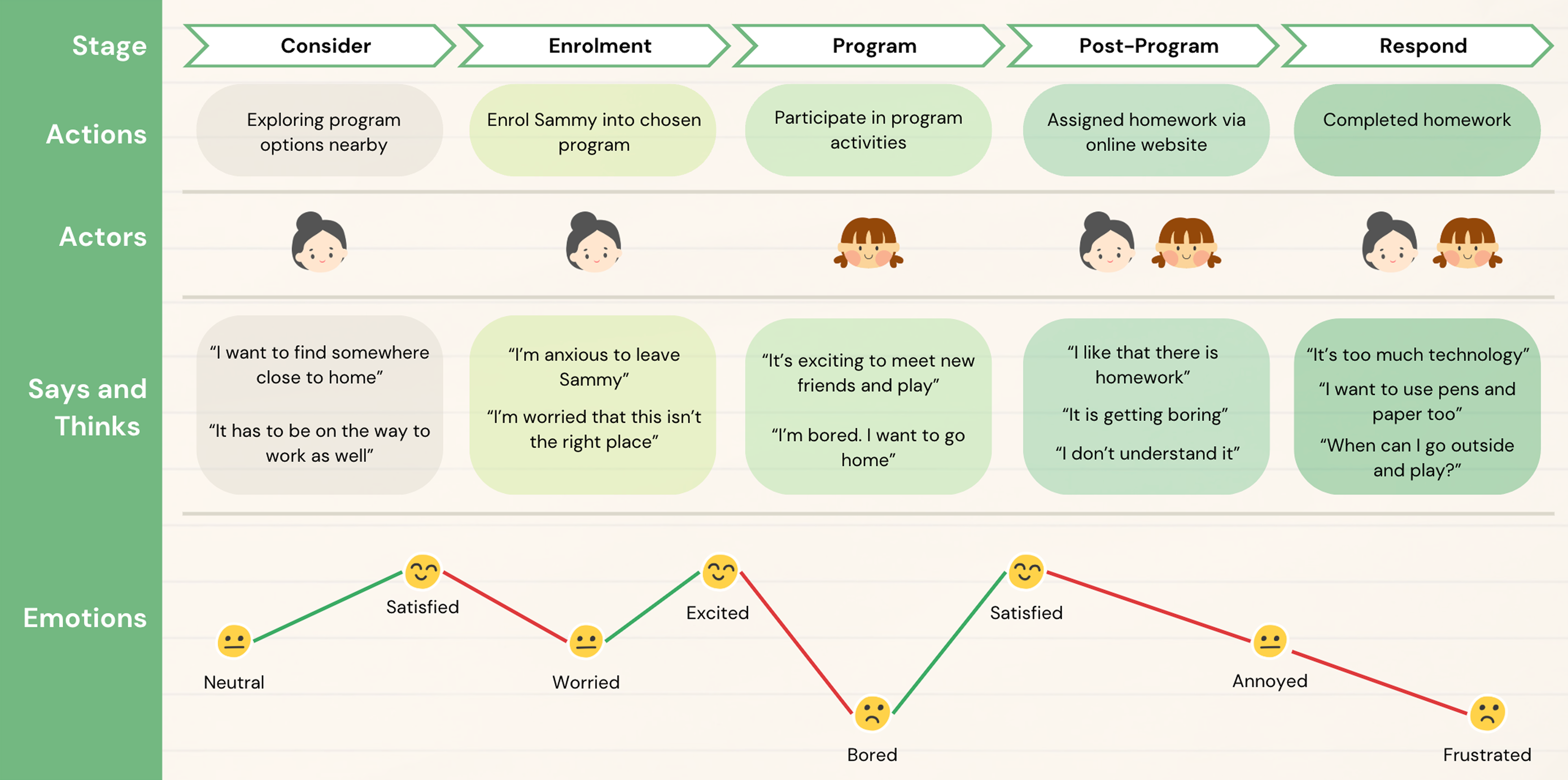
The main challenge was designing a support system that encourages joy, self-motivation, and a love for reading. Our solution aims to be collaborative, personalised, and multi-sensory, with a strong focus on accessibility and appropriate tech integration.
Concept Ideation
Using our persona Sammy as a starting point, each team member developed nine ideas using storyboards that explored digital, physical, and spatial possibilities. We evaluated them using a decision matrix and narrowed it down to three concepts:
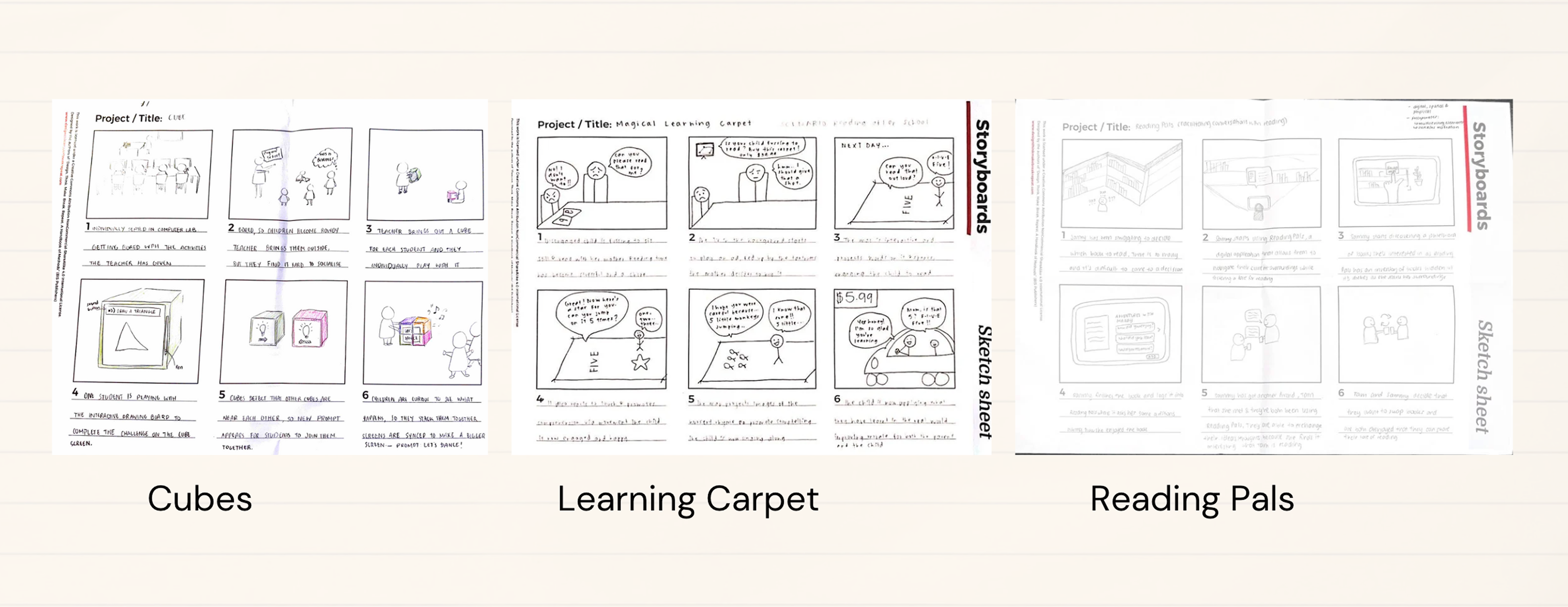
We assessed these ideas against a set of criteria based on our research findings and defined problem statement.
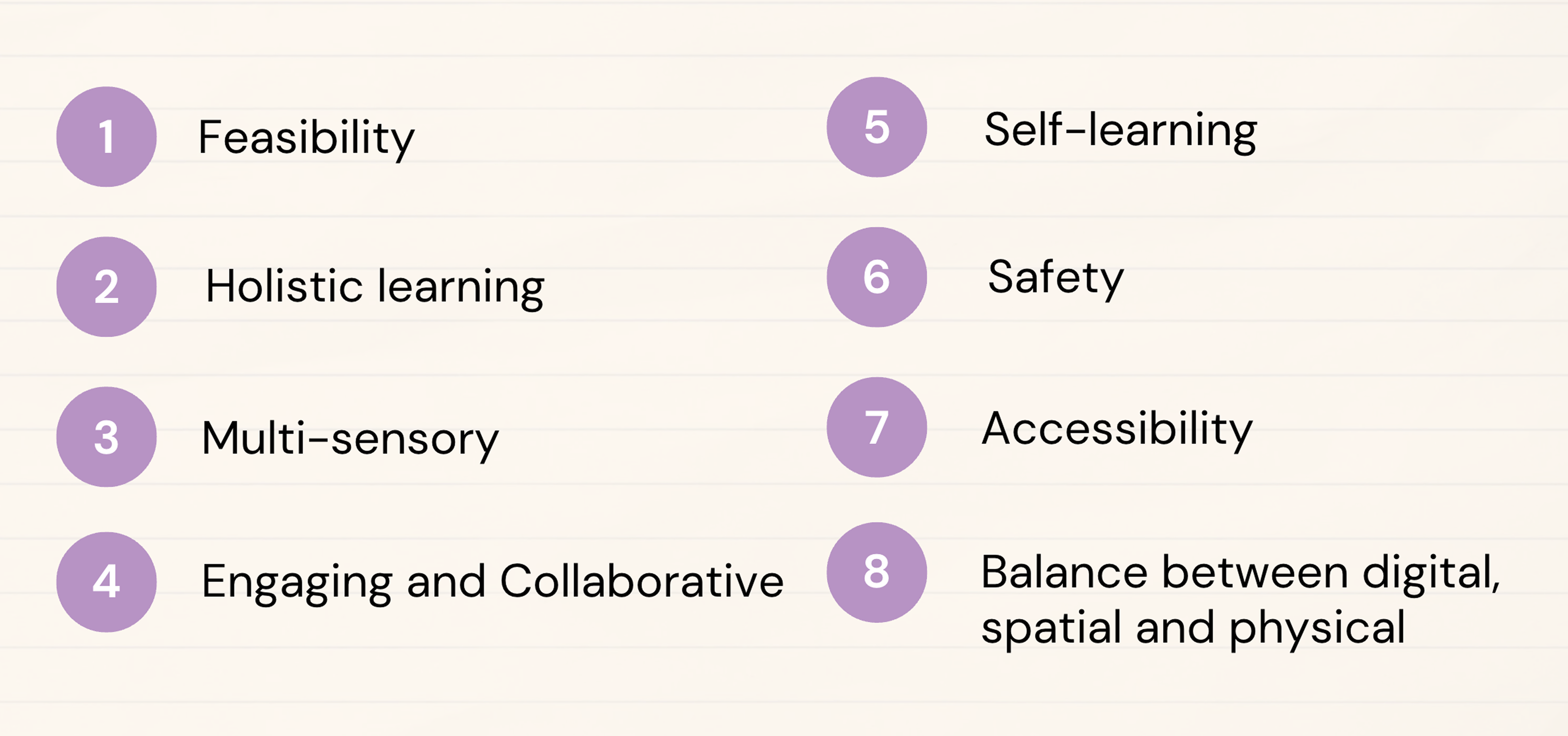
While the Cube scored highest, we still considered features from the other ideas—like AR interactions and multisensory engagement. We asked ourselves:
Iterating...
With a clear direction, we began prototyping, guided by our success criteria and feedback. We went through three iterations, starting from low-fidelity sketches to a mid-fidelity prototype.
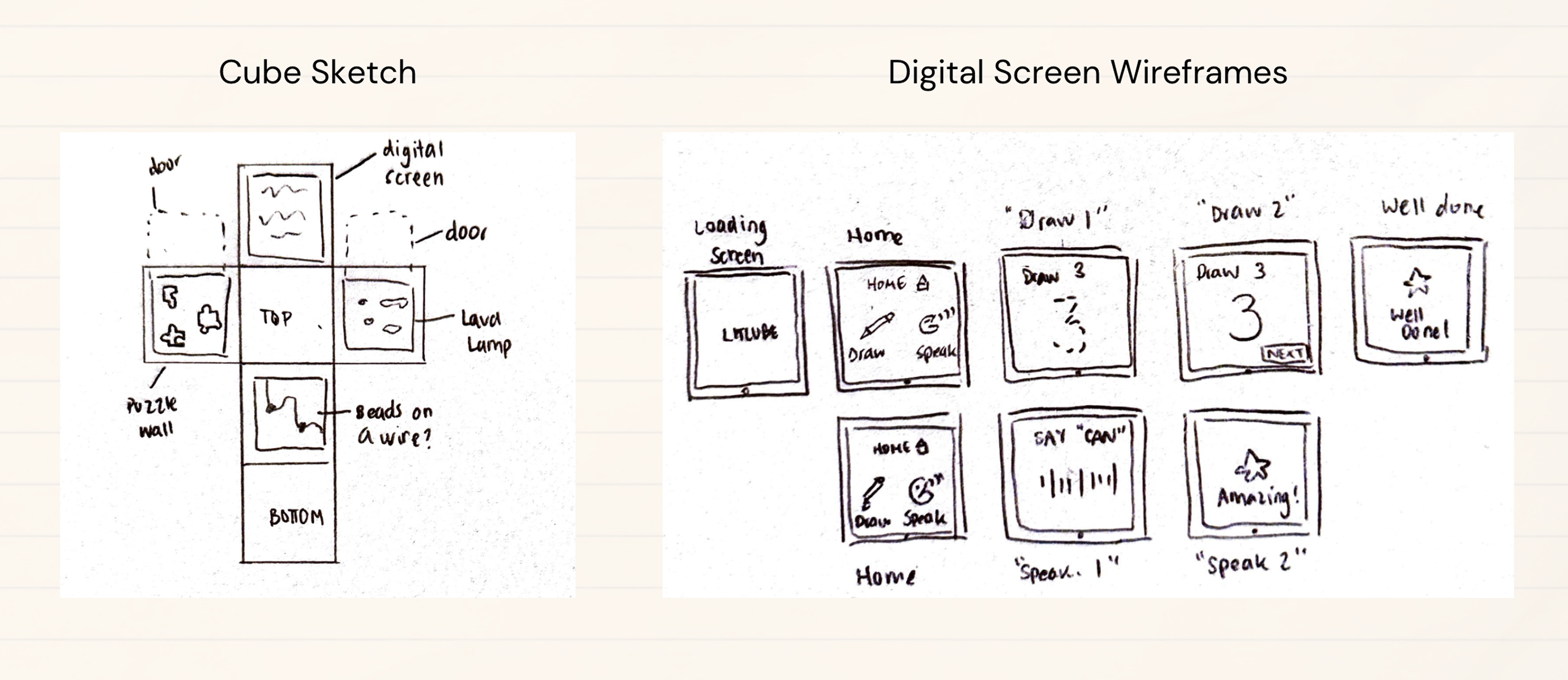
The first iteration focused on individual usage. We explored digital drawing, listening activities, and concepts for cube faces like puzzles or lava lamps.
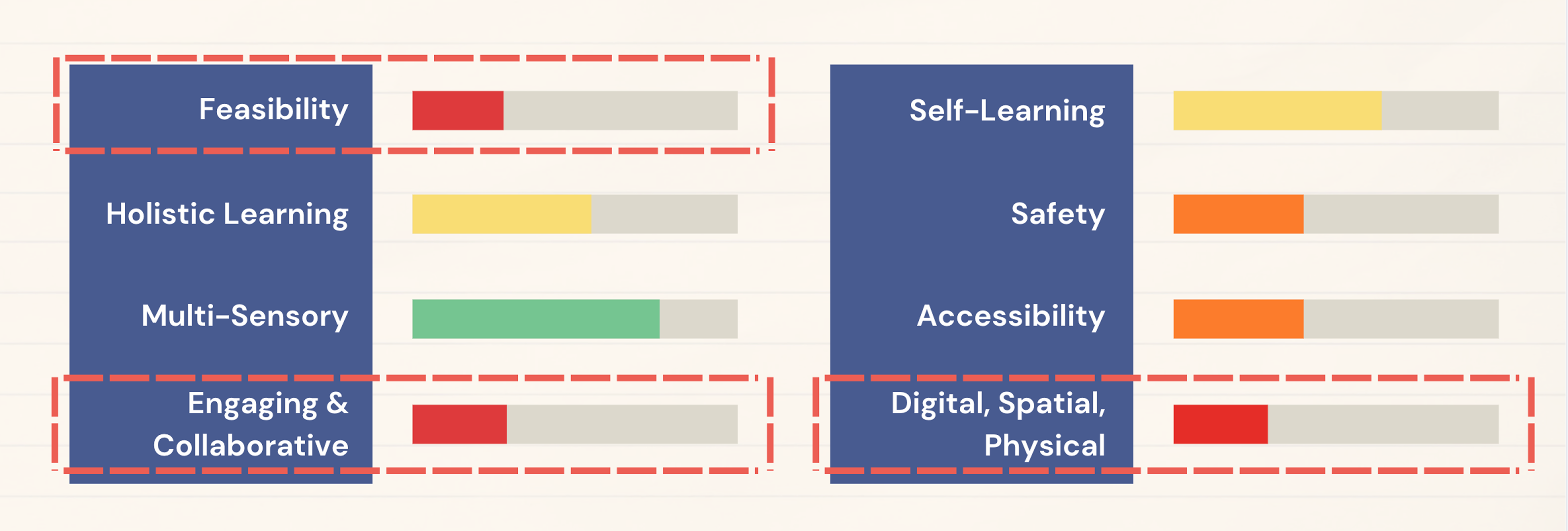
When compared against our criteria, this version lacked collaborative features and included impractical components. So in our second iteration, we added group activities like image and word-building.
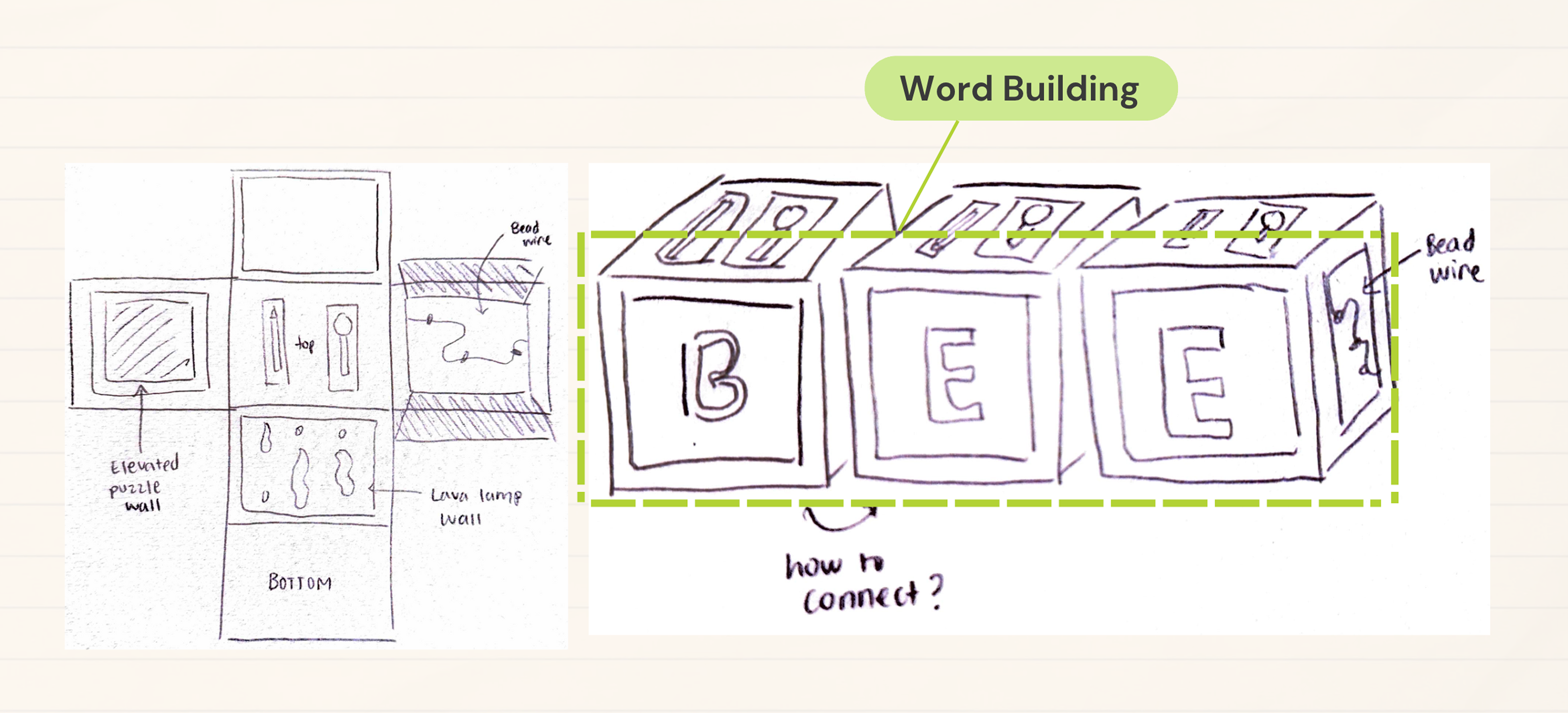
During our studio critique, feedback pointed to the need for stronger integration of digital, physical, and spatial aspects. We incorporated this in our final mid-fidelity prototype, designed around a more cohesive user journey.
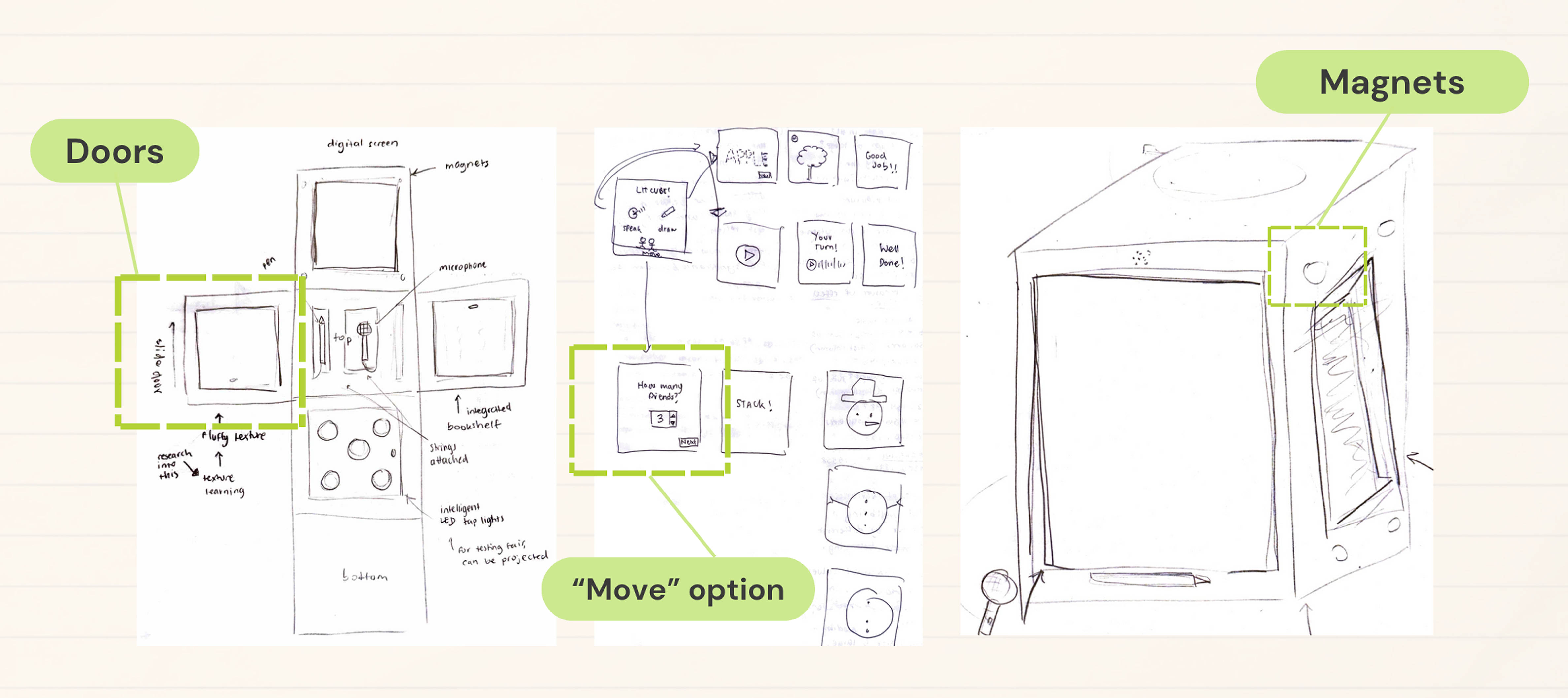
Final Prototype Features
LitCube offers two spatial modes—home and school. At home, it focuses on solo learning with prompts for speaking, reading, and writing. In schools, it encourages collaboration—kids can build words and images together, even swap books.
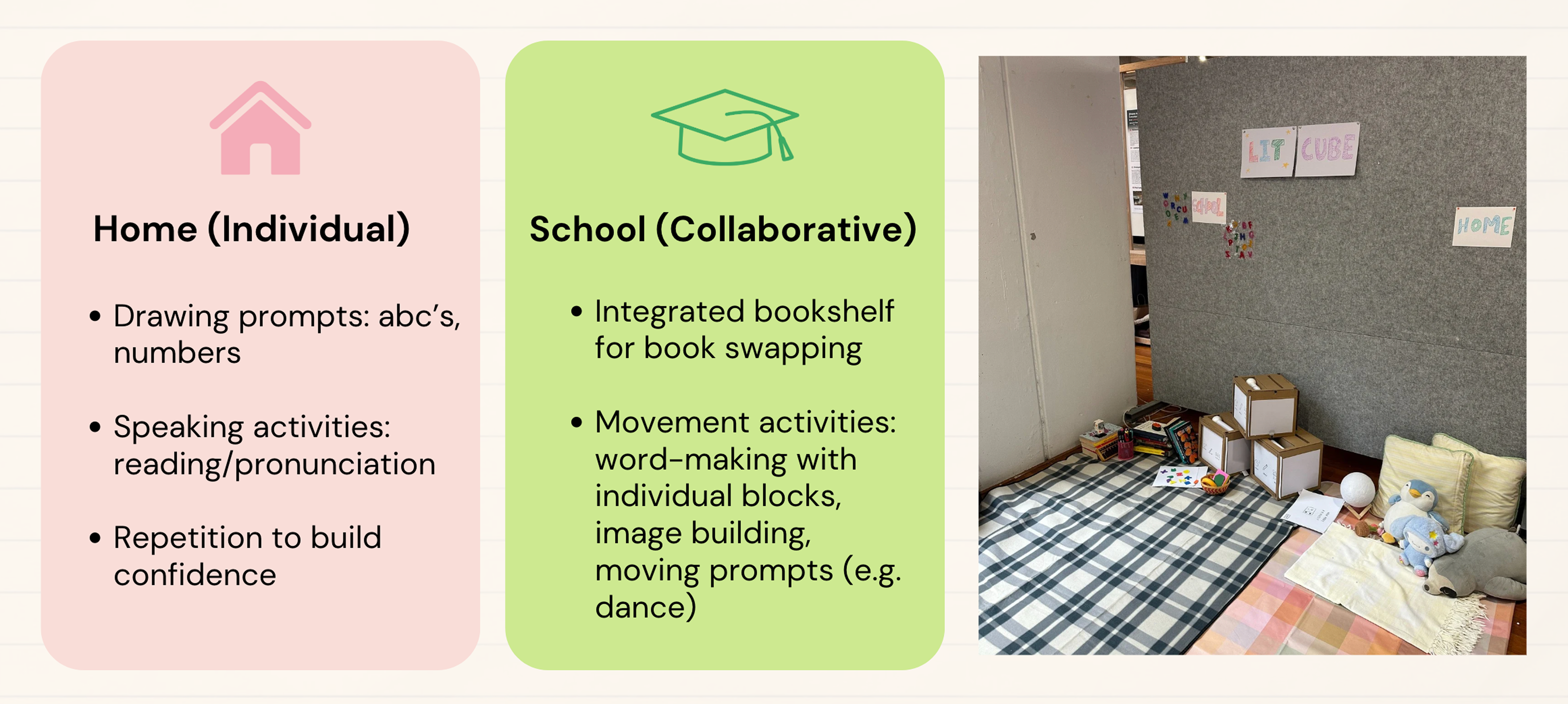
Its design invites curiosity through sensory components like a textured wall, fidget buttons, and a personal book shelf. These features are supported by research suggesting that sensory tools improve emotional engagement in learning.
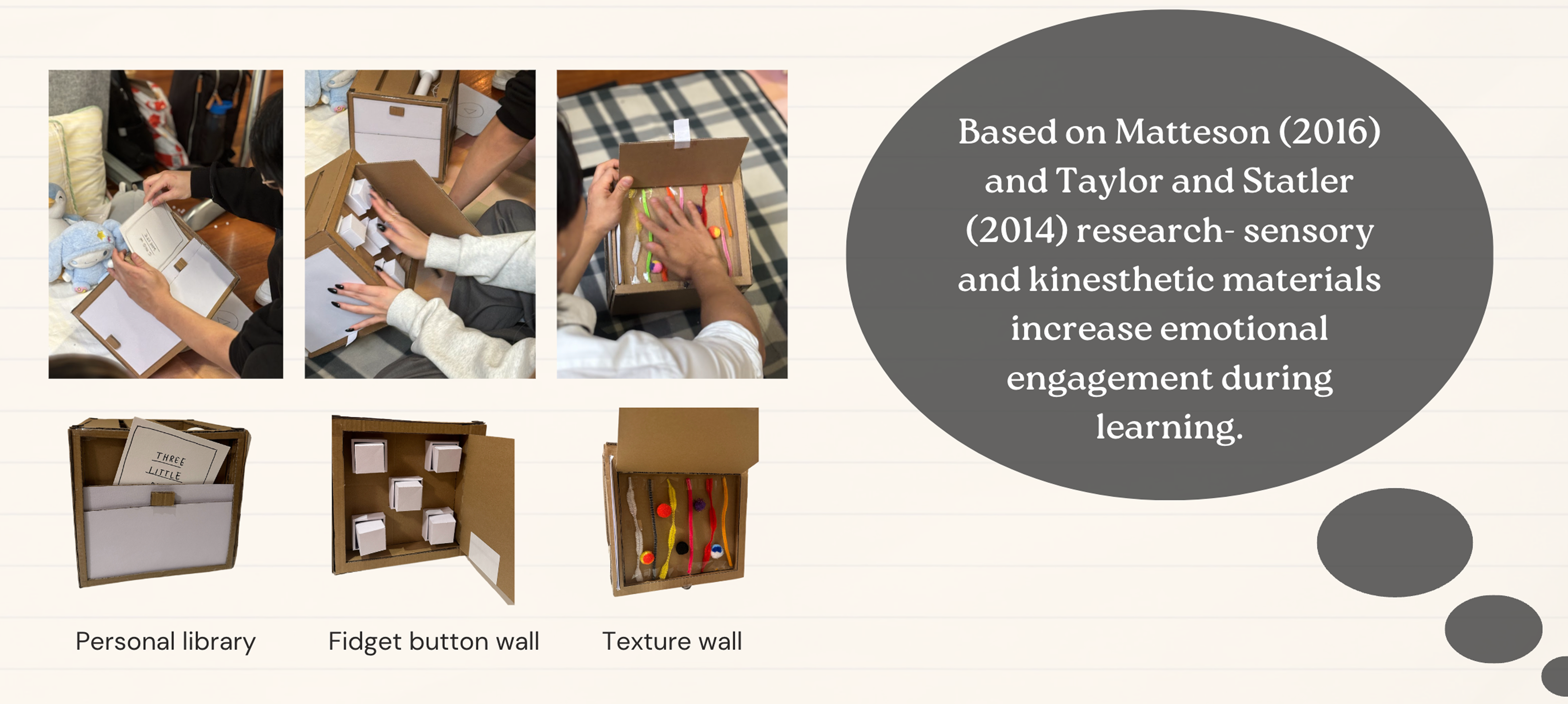
The digital interface includes a touchscreen, microphone, speaker, and stylus. It supports three modes:
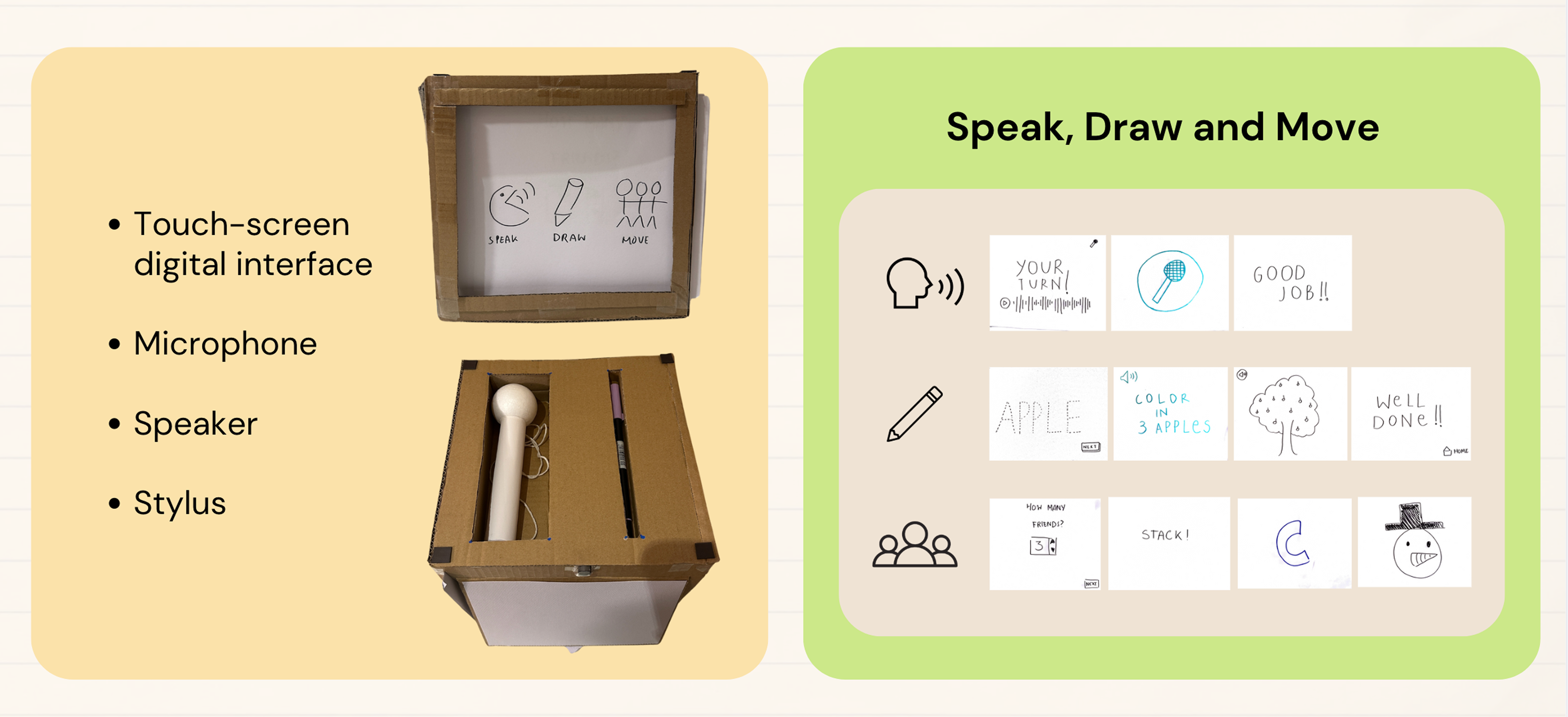
User Testing
We tested LitCube at the UX Testing Fair using a structured protocol with seven participants.
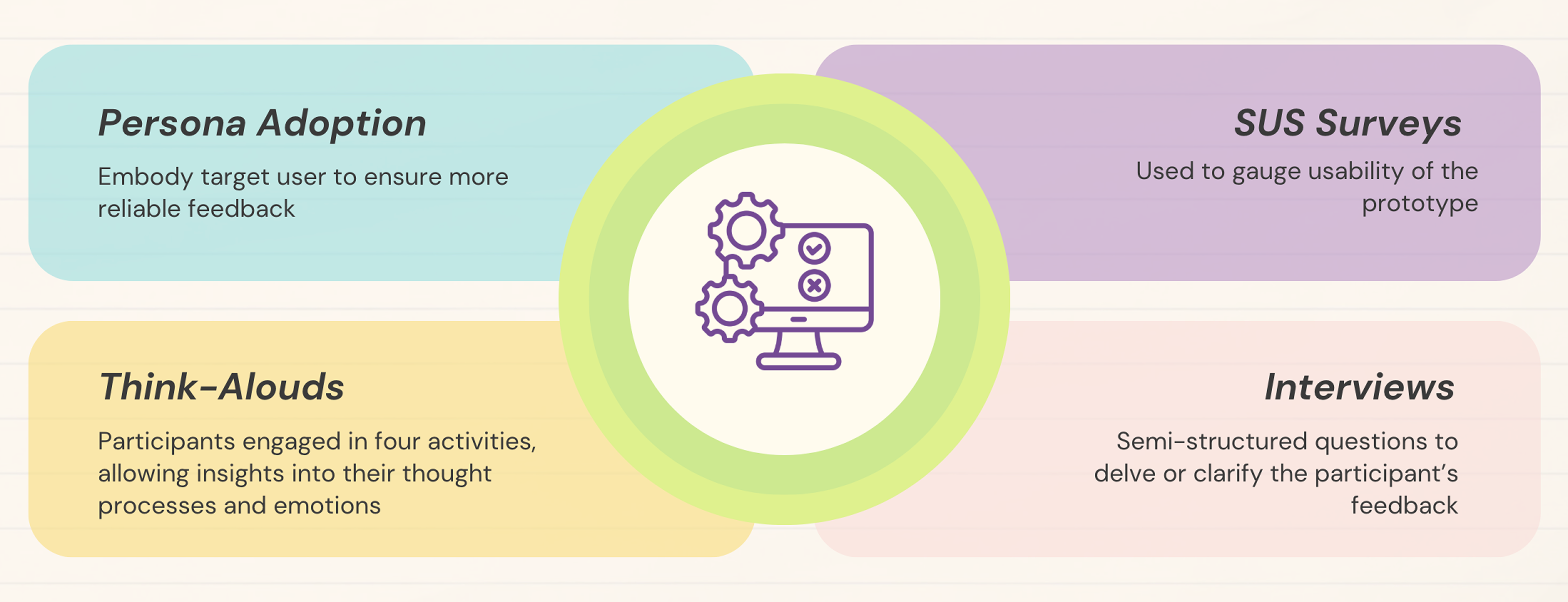
The feedback from this revealed several key points:
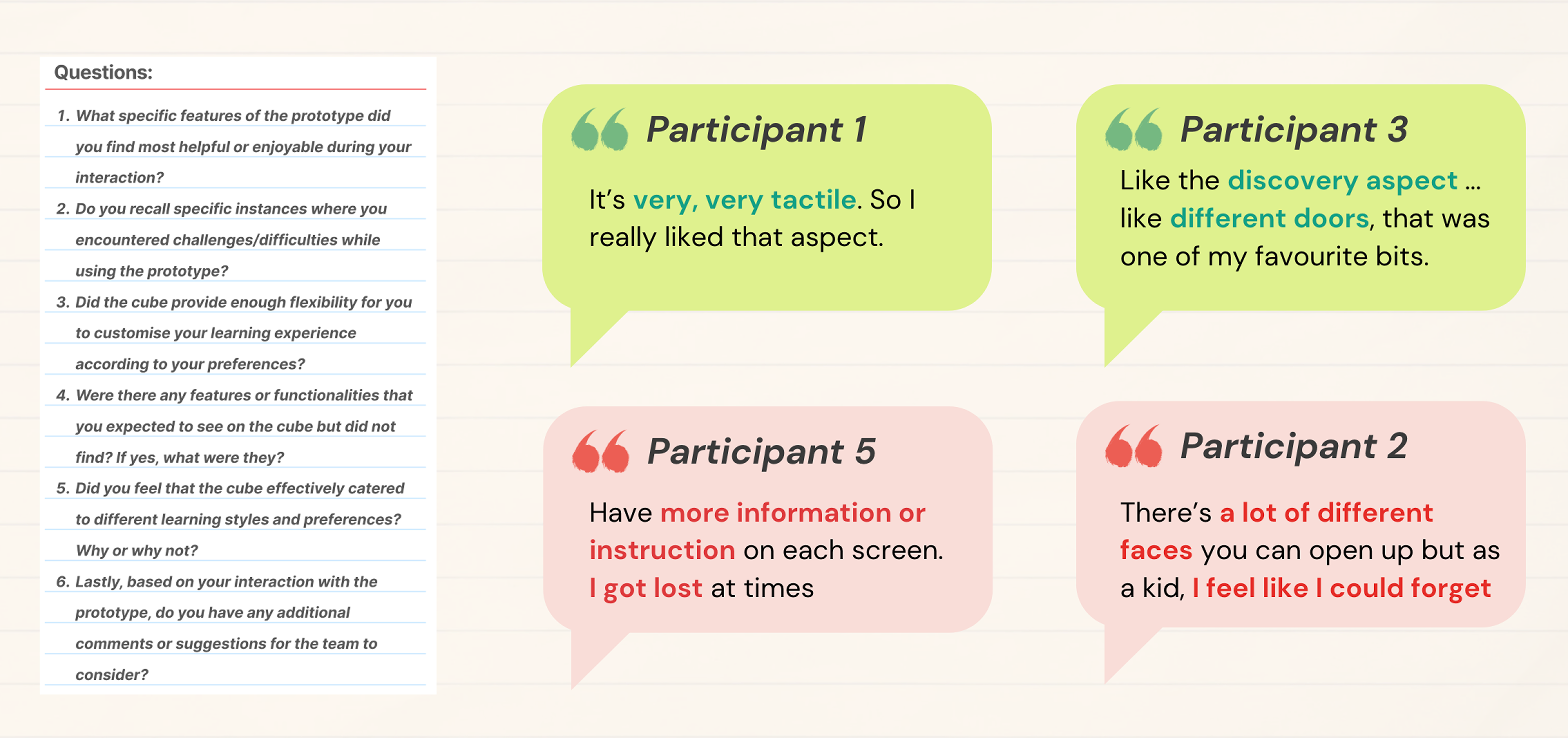
Next Steps
Our next phase will focus on refining the design using expert feedback and further iteration. We plan to test with early primary students using a revised protocol. By month’s end, we aim to finalise a high-fidelity prototype and move closer to bringing LitCube into real classrooms.